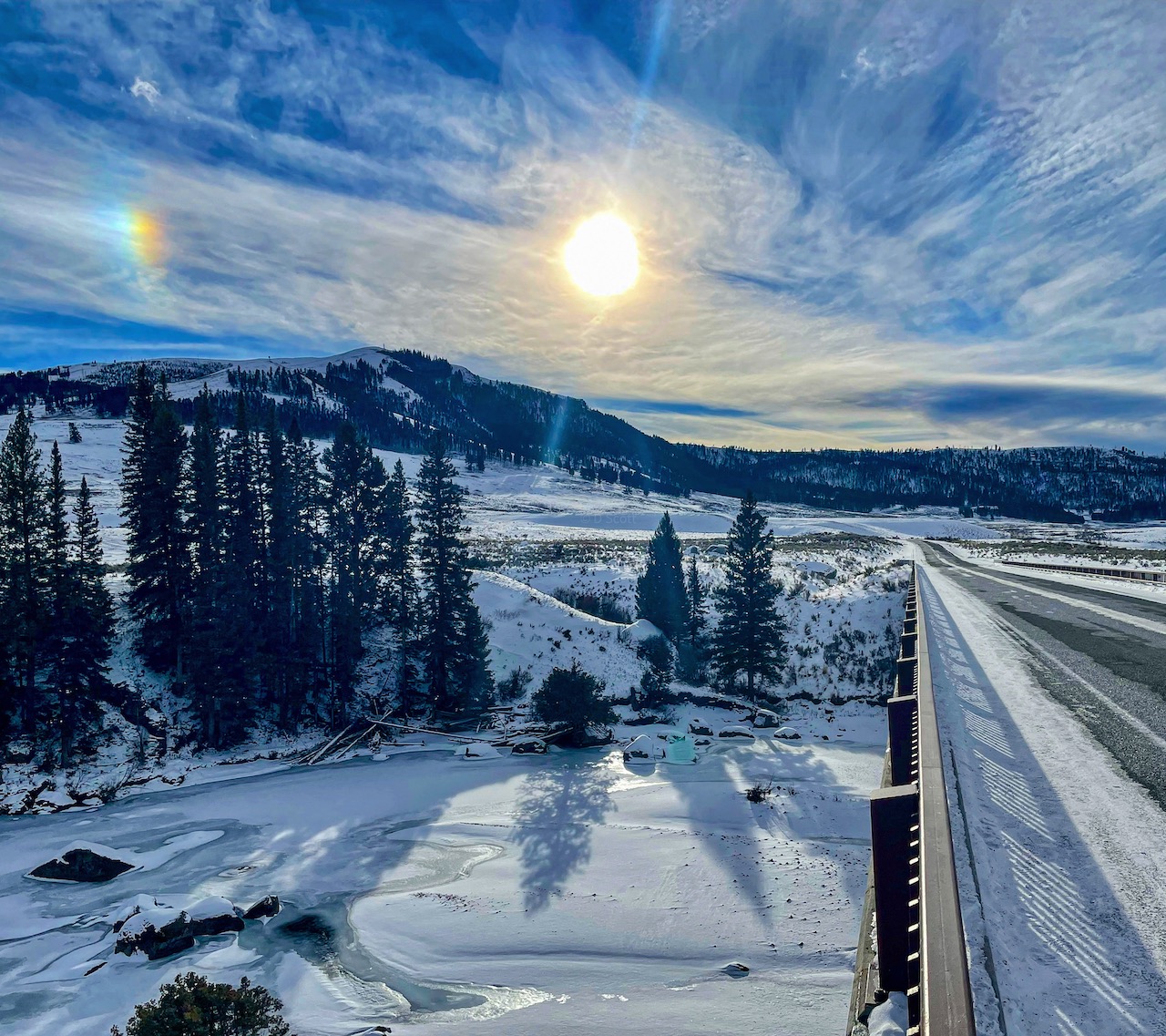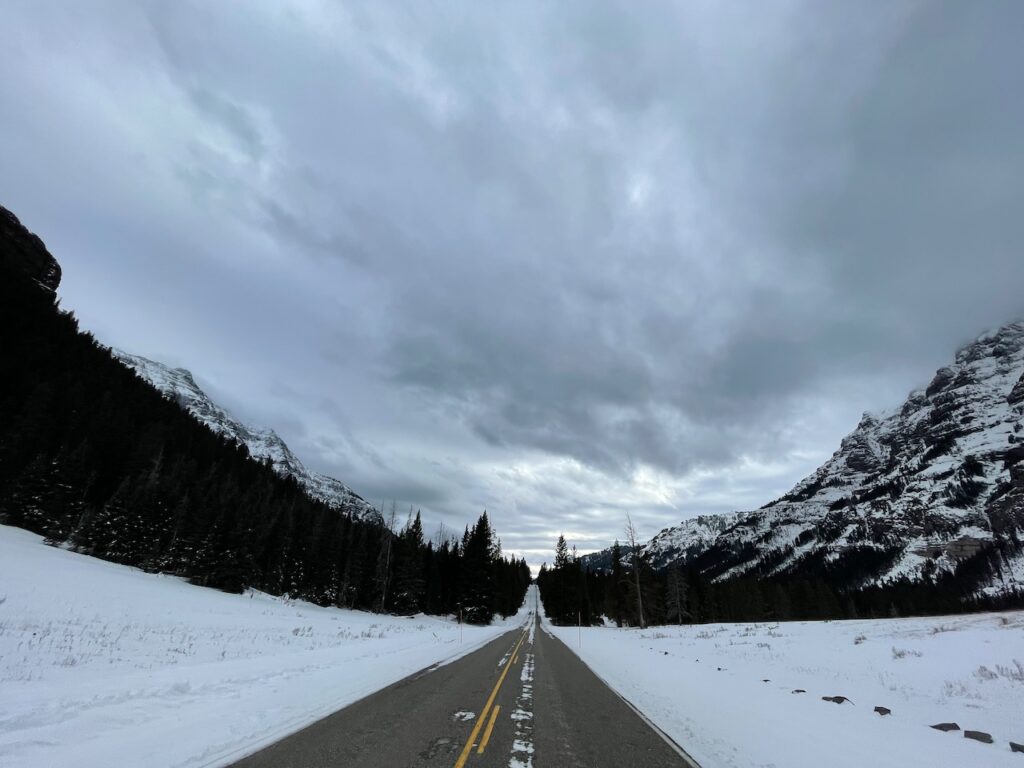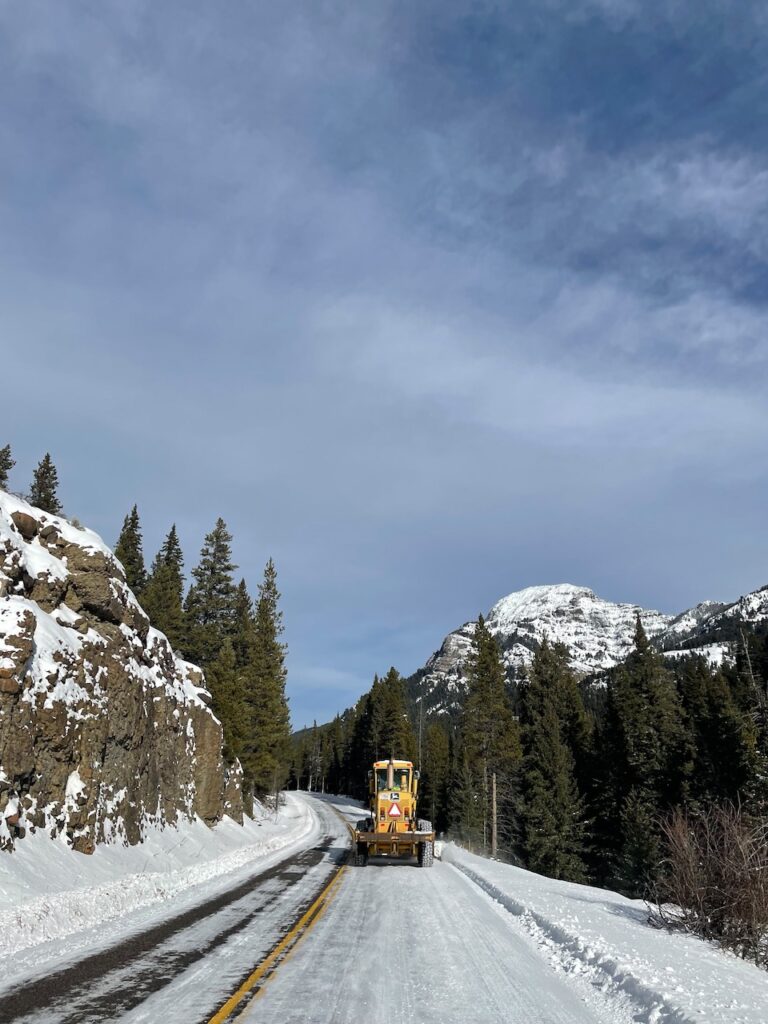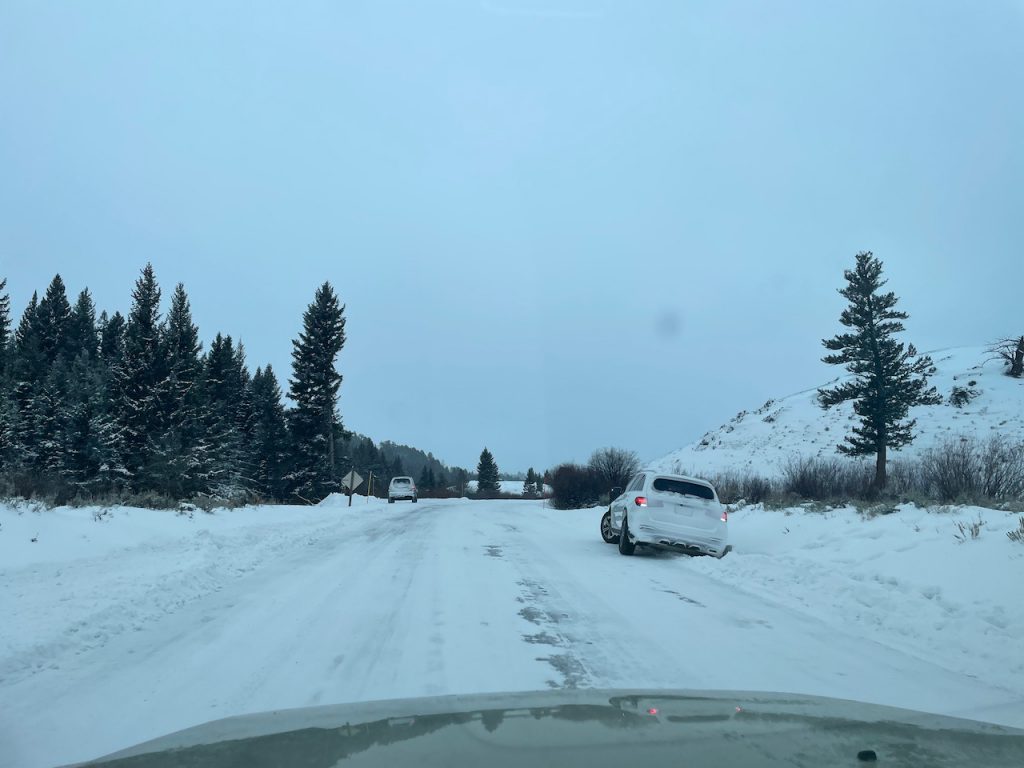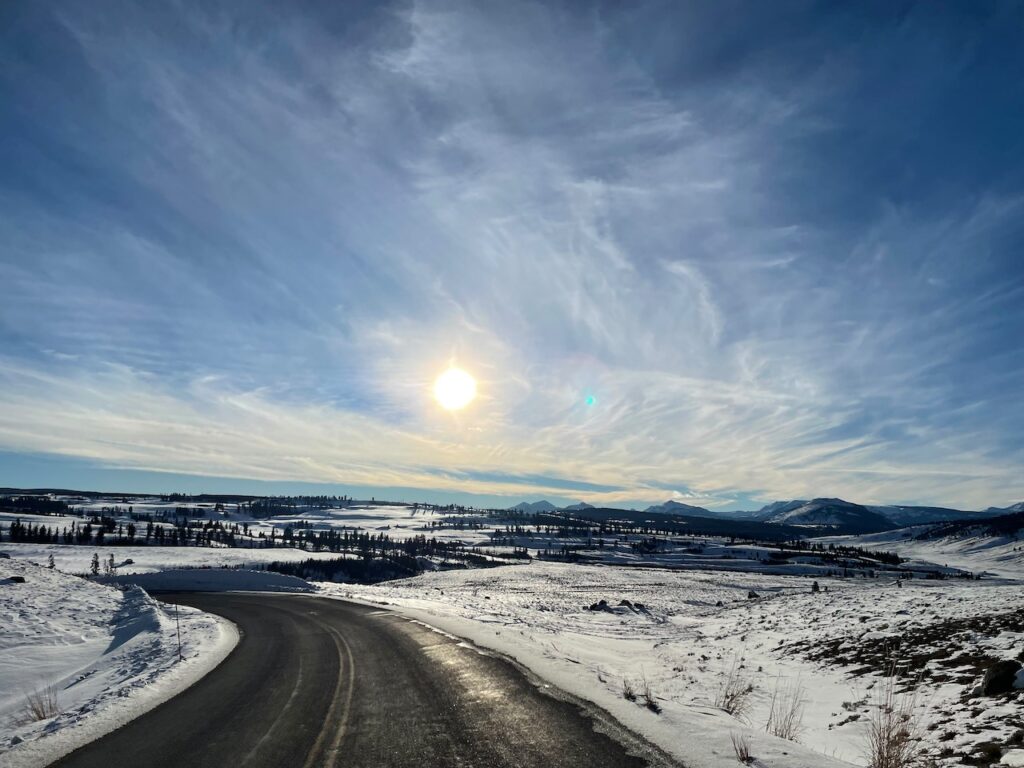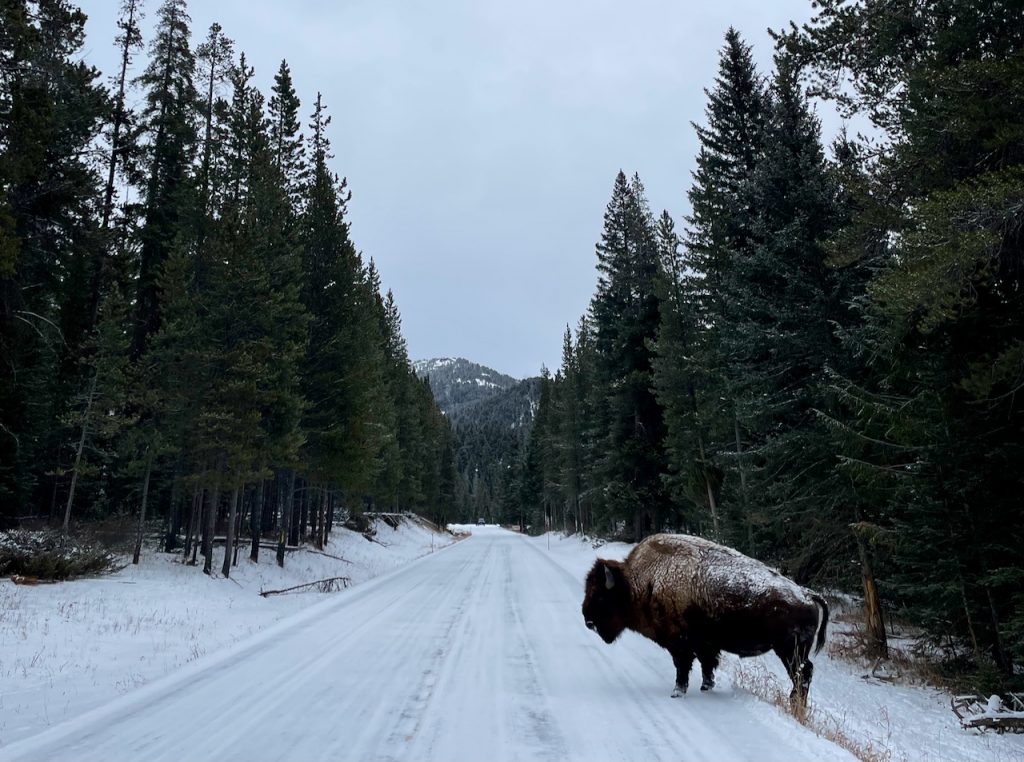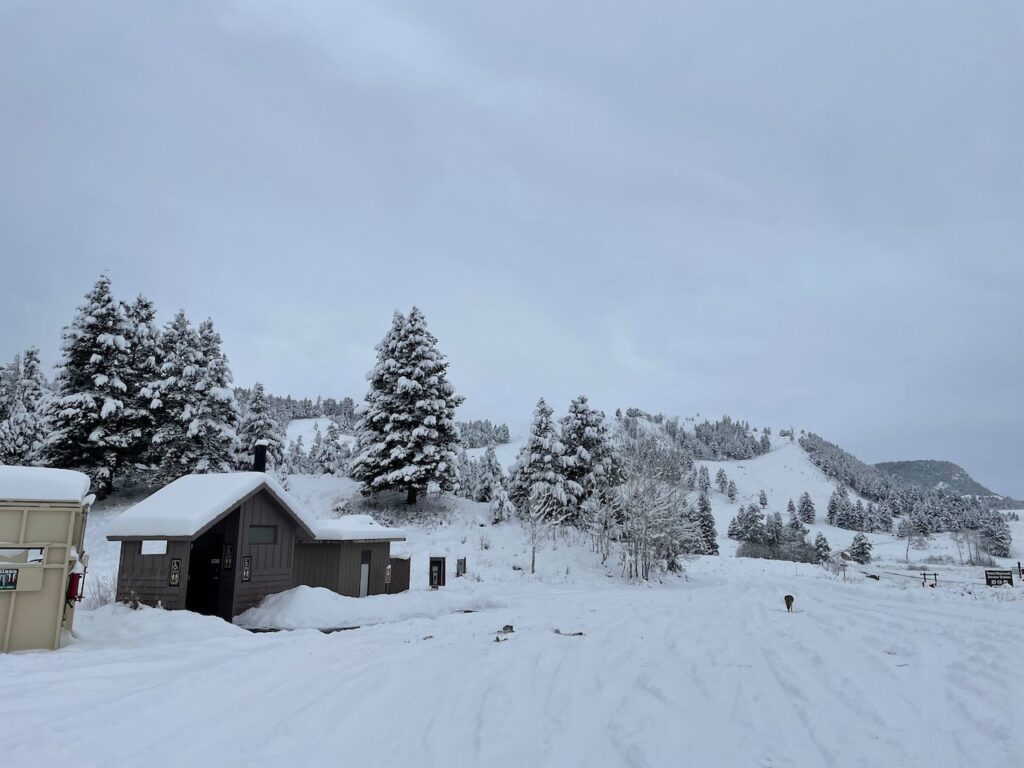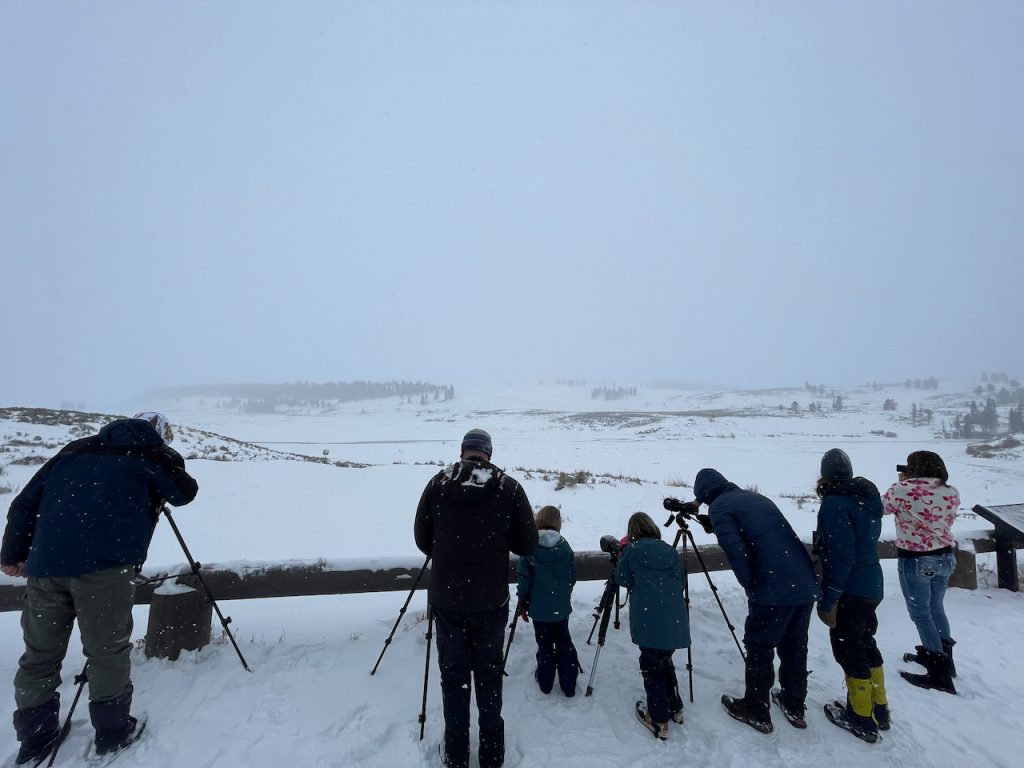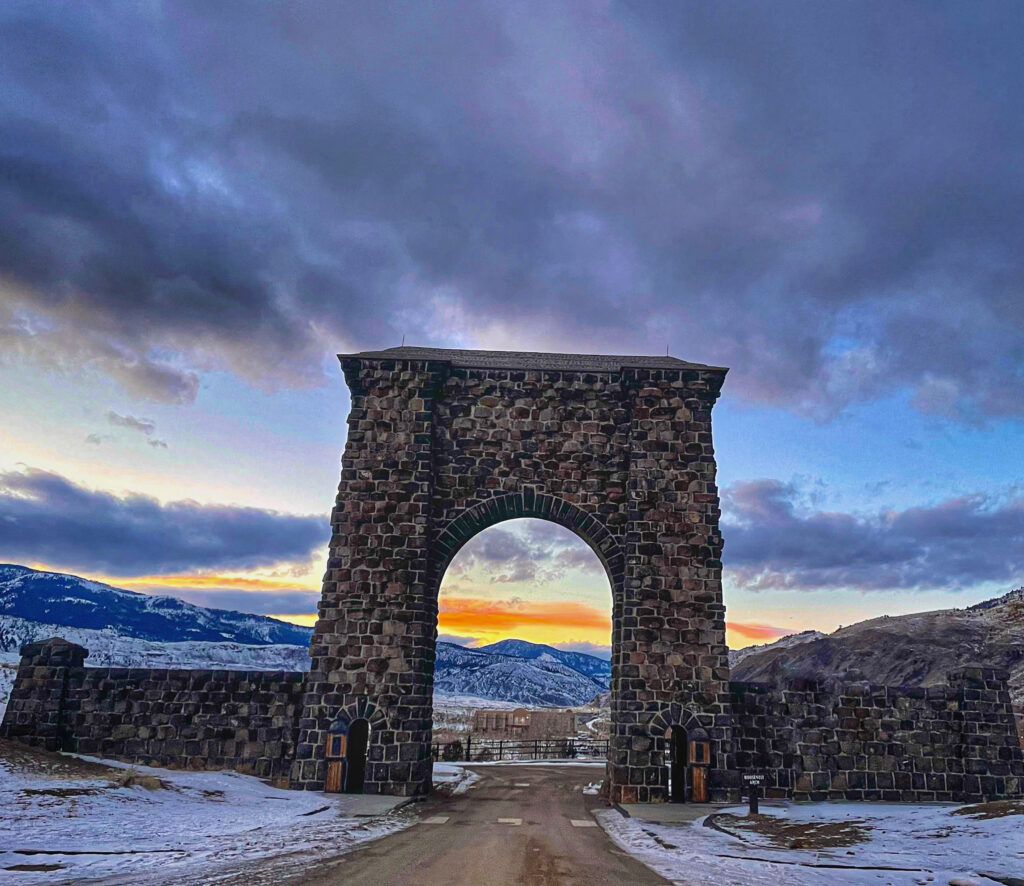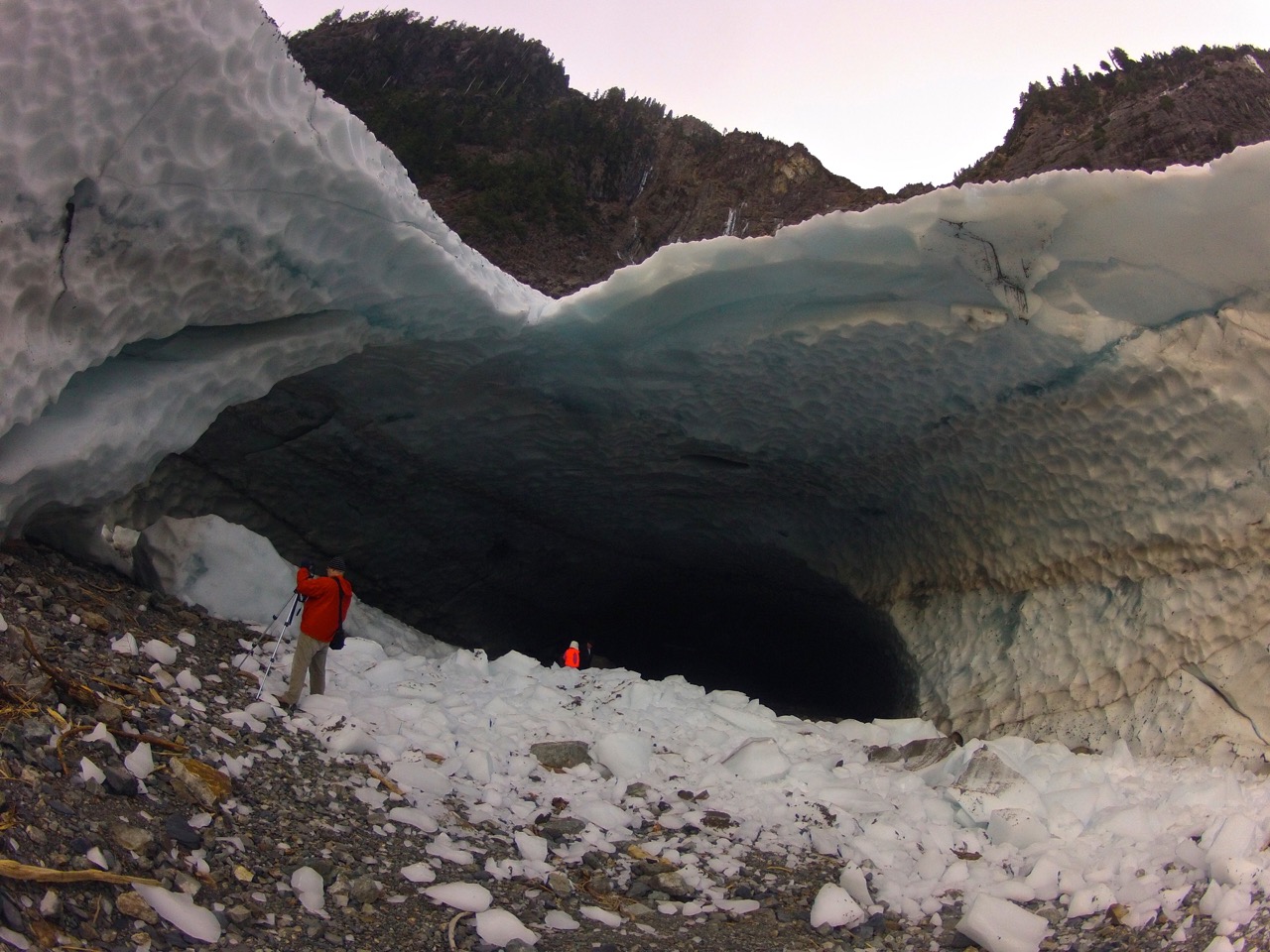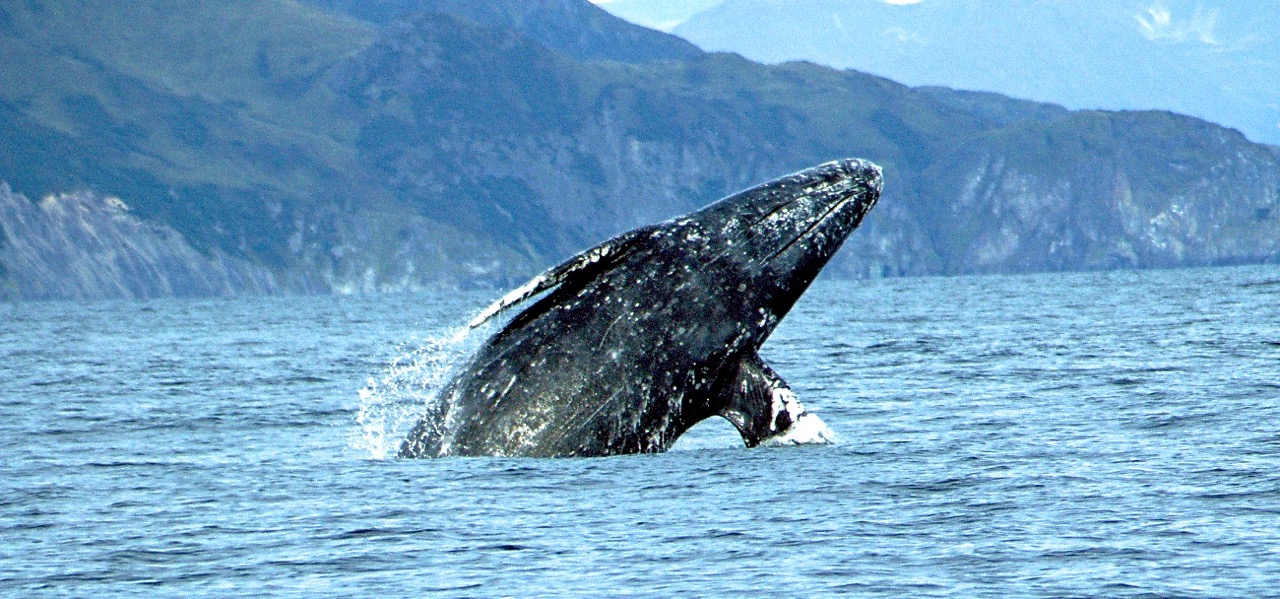Picture yourself taking a scenic drive through a snow-covered Lamar Valley, as bison roam near you and a pack of wolves roams the hill in the distance. Around the next corner, a few moose will be eating branches next to a frozen creek, with majestic mountains rising to the sky, and the snow matching the clouds.
This scenario sounds almost too good to be true, but it is something that can happen during a winter visit to Yellowstone. A visit gives you snow-draped landscapes along a route filled with awe-inspiring beauty, with frozen rivers and waterfalls, and the thrill of once-in-a-lifetime wildlife sightings against the backdrop of a winter wonderland.
This winter, embark on a driving adventure through the scenic route connecting Cooke City and Gardiner, Montana, within Yellowstone National Park. As the only road open to all in the winter, this journey promises an epic adventure that will leave you with memories to last a lifetime.
Visiting Yellowstone National Park in the cold season grants access to an enchanting wintry landscape, full of breathtaking views, stunning snowshoe and cross-country ski trails, and of course, the world-class wildlife-watching experiences of Yellowstone.
Visiting Yellowstone in the winter isn’t just all fun in the snow and wildlife watching. A winter demands careful preparation and attention to specific road conditions. Read on for a detailed guide on navigating the winter roads between Cooke City and Gardiner. Get ready to experience the magic of winter in Yellowstone like never before!
Route Overview
The route between Gardiner, Montana, and Cooke City, Montana spans approximately 55 miles and is the only open road in Yellowstone during the winter on which you can drive. It will take you an hour and a half to drive between the two towns in the best of conditions, so plan on the drive each way taking around 2 to 2.5 hours.
Please know that you can only reach Cooke City in the winter by driving through Yellowstone National Park from Gardiner, Montana. You cannot access the town from Red Lodge over the Beartooth Highway or Chief Joseph Highway from Cody, Wyoming.
The drive is memorable and amazing, rewarding those brave enough to attempt it a chance to take in spectacular views of snow-covered landscapes and seemingly endless wildlife encounters. Along the drive, you’ll encounter the thermal features of Mammoth Hot Springs, passing through the Lamar Valley and getting stunning views of the Absaroka-Beartooth Mountains. You may see elk, bison, foxes, moose, coyotes, bighorn sheep, otters, and even wolves. You’ll have a chance to take short snowshoe treks or head out into the tundra-like landscape on a more serious snowshoe or cross-country skiing adventure. What you won’t see will be the usual crowds of the summer.
Road Conditions and Closures
Regularly check road conditions, closures, and weather forecasts before starting your journey.
Be aware that this route may close temporarily due to heavy snowfall or other winter-related challenges. The roads will more than likely be icy and snow-packed in many locations, especially in areas that receive limited sunlight. The National Park Service does its best to have the roads as drivable as possible, but they can only do so much.
The interior of the park, including locations like Grand Prismatic, Old Faithful, the Grand Canyon of the Yellowstone, Yellowstone Lake, and Norris is only accessible by snow coach and snowmobile tours. You cannot drive there on your own in the winter.
Please refer to Yellowstone National Park’s Road Conditions page for all the details you’ll need.
Winter Tires and Chains
If possible, equip your vehicle with high-quality winter tires for enhanced traction. If you are visiting with a rental car, request an upgrade. Do not assume that you’ll be fine in standard tires, or even a vehicle without 4WD or AWD. Even with those features, the roads can be dicey at times. Pretty much every winter day, a car slides off the road in the park. AAA and other towing insurance DO NOT work within park boundaries and the fee is quite high. You may also be ticketed by the park for driving off the road.
Be aware that there are usually no shoulders on the road and driving even a foot off the road can result in your car getting stuck in snow.
Vehicle Readiness and Emergency Preparedness
Before driving into the park for a winter adventure, ensure your vehicle is winter-ready with a thorough inspection. Check the battery, brakes, antifreeze levels, and all essential fluids. Carry a winter emergency kit with essentials like blankets, food, water, and a first aid kit. Charge your phone and inform someone of your travel plans. While rangers do patrol the road, conditions can change quickly and help may take quite some time to arrive.
Speed and Driving Techniques
Adhere to posted speed limits and adjust your speed according to road and weather conditions. The fastest one can legally drive anywhere in Yellowstone National Park is 45mph. During icy and snowy sections, drive much slower. Do not slam on your brakes if you need to stop, pump them instead. If you find that cars are behind you and want to go faster, use a pullout and let them pass you. Do not drive faster than you feel comfortable.
Also note that wildlife will be using the roads, often causing traffic delays. Drive especially carefully around blind corners and when going up and down hills. Animals can and will appear out of nowhere in front of you, so pay attention. Bison, coyotes, elk, deer, and even wolves have been hit by vehicles, often resulting in the animals’ deaths and serious damage to cars and trucks. Animals will be crossing or walking on the roads any time of the day, so drive cautiously, especially during dawn and dusk, when wildlife is more active.
Gas Stations and Facilities
You’ll find a few gas stations in the park, one at Mammoth and one at Tower Junction. Neither will be staffed or have anything besides gas to purchase, via credit/debit. These two gas stations should only be for emergencies. The smart thing to do is to fill up your tank in Cooke City or Gardiner before the journey. Gas will also be slightly less expensive outside of the park and the gas stations will have more amenities during business hours.
Plan rest stops strategically, considering available facilities are extremely limited in the park. A list of bathrooms and pit toilets along the route can be found in this article: https://outdoor-society.com/where-to-find-a-toilet-in-yellowstone-national-park-this-winter/
Your only bet for food and drinks inside the park will be found at Mammoth, with many more options in Gardiner. A few spots will also be open in Cooke City, but the town is extremely small, so don’t expect much.
Use Pullouts and Do Not Stop in the Road
I cannot say this enough: Use pullouts. Do it as often as possible. Be it for wildlife watching and photography, or to let a car pass, use them to avoid traffic disruptions and enhance the experience for all travelers.
Do not stop on the road. You will not only cause a potential traffic hazard for other vehicles, but you’ll also be risking getting a fine from park rangers, as this is against park rules. If you see something you want to take a closer look at, use the aforementioned pullouts. If there isn’t one nearby, those are the breaks.
Finally
Embarking on the winter road journey from Cooke City to Gardiner in Yellowstone National Park is a unique opportunity to witness the splendor of Yellowstone in its snowy glory. Stay informed, drive safely, and embrace the adventure as you traverse this stunning winter landscape.
Safe travels and I hope to see you there!

